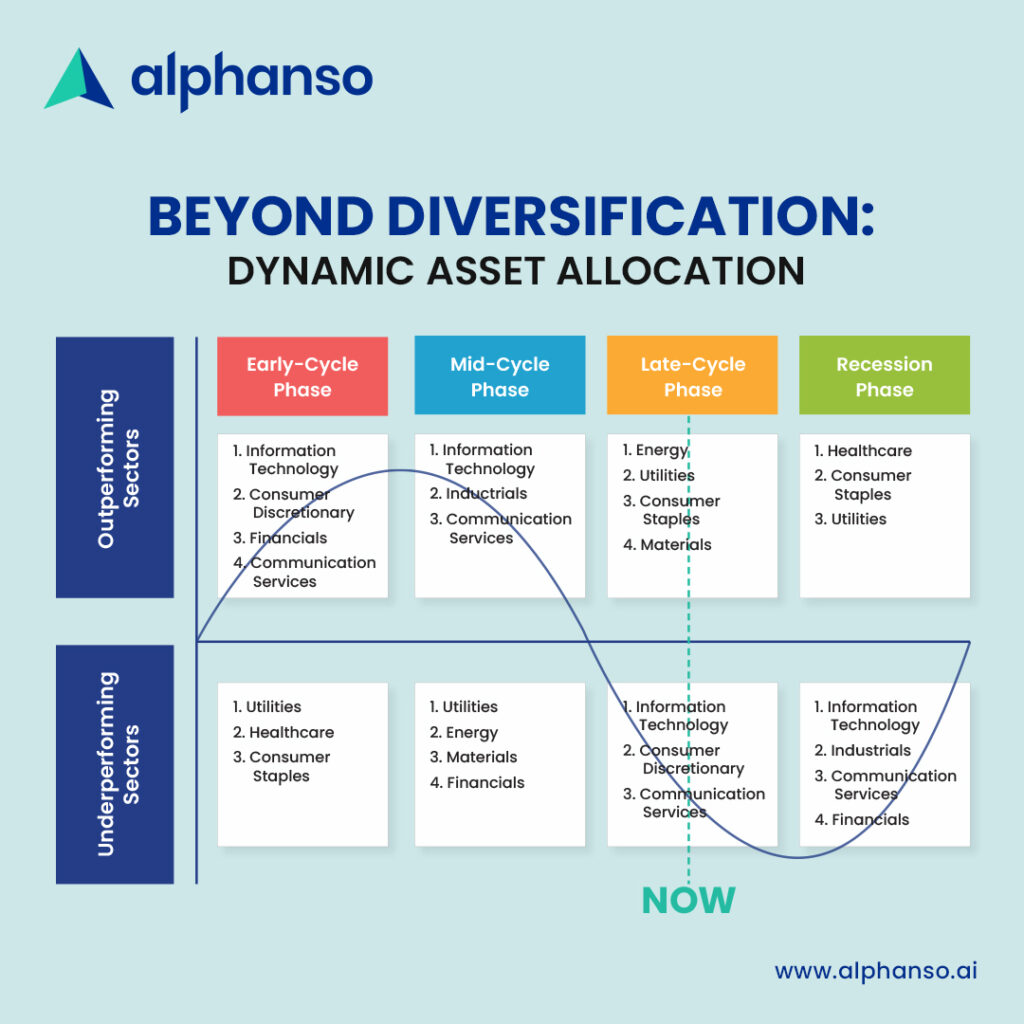2022 has been acutely perturbing for investors, with the dire straits of the tumbling stock markets. The S&P500 is already down 22% YTD, owing to the straggling technology sector, which faltered the overall performance of the Index. But that probably isn’t a big surprise, given how well this sector has performed over the past few years and where we are in the global economic cycle.
Cycles of Performance
Corporate earnings, inflation, interest rates, and other factors change as undulating economies influence the equity markets. Understanding how these factors affect business cycle and sector performances may help investors assess and adjust their exposure to different investment options.
There are 4 phases of the cycle for every economy:
- The early-cycle phase characterizes the growing economy, recovering from the recession. Interest rates are falling, and corporate earnings are growing.
- The mid-cycle phase characterizes strong but moderating economic growth. Interest rates are at the bottom, and earnings are peaking.
- The late-cycle phase characterizes the quieter economic and corporate earnings boost. Inflation is higher, and interest rates are rising.
- The recession phase characterizes declining economic growth and corporate earnings. Interest rates reach the culmination, and inflation is cooling down.
Implementing Strategic Asset Allocation
There can be various approaches to identify the optimal allocations in each sector, such as – momentum-based strategies, top-down and macroeconomic indicators-based strategies, and fundamental and bottom-up-based strategies.
The most effective and smoothly implemented method is business cycle analysis. Since economic cycles generally exhibit attributes that simulate sectors or industries differently, investors can identify sectors supported by the current economic phase.
Based on notable economic, fundamental, and quantitative research data, the investors can implement the asset allocation recommendations for their portfolios, as shown below.






